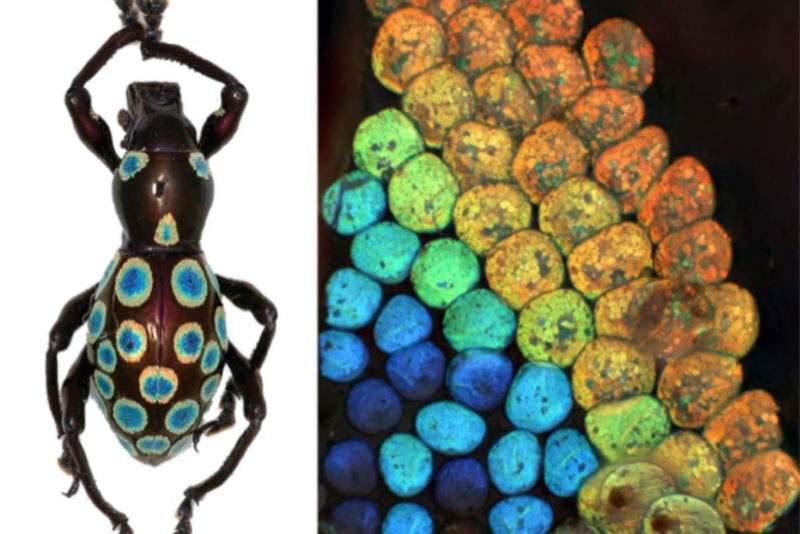D: I wouldn’t usually call an insect beautiful, but this one does have really pretty spots. Look at all those colorful rings—it’s like a rainbow.
Y: That’s why they call it the rainbow weevil. A lot of insects can produce one or two colors, but the rainbow weevil has spots with a whole spectrum: concentric rings starting in the center with blue, then cyan, green, yellow, orange, and finally red on the outside. Which got scientists wondering how the rainbow weevils managed it. They examined their scales using high- energy x-rays and a scanning electron microscope to get a detailed picture, and found that each scale was made up of 3-D crystalline structures made of chitin, the main ingredient in insects’ exoskeletons. The different colors depend on two factors: the size of the crystalline structure in each scale, and the volume of chitin that makes up the crystalline structure. The largest crystalline structures with the most chitin reflect red light, and smallest crystalline structures with the least chitin reflect blue light. The sizes and volumes that fall in between those two extremes produce the other colors.
D: And that’s unusual?
Y: Most insects have chitin structures that are all the same size, and the color we see depends on how the structures are angled—different angles reflect different wavelengths of light. Since the rainbow weevil’s colors don’t depend on angle, researchers think that studying them can help us create cosmetics or displays on phones that look the same from any angle, without any color distortion.
D: Great, then maybe I’ll be able to get a better picture of this weevil. The one I just took doesn’t do it justice.










